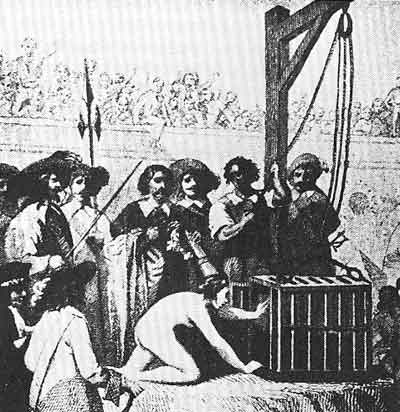As with all European tribunals of the time, torture was employed.[54][61][62] The Spanish inquisition, however, engaged in it far less often and with greater care than other courts.[54][62][63] Historian Henry Kamen contends that some "popular" accounts of the inquisition (those that describe scenes of uncontrolled sadistic torture) are not based in truth. Kamen argues that torture was only ever used to elicit information or a confession, not for punitive reasons.[64] Modern scholars[who?] have determined that torture was used in two percent of the cases, and in less than one percent of the cases was it used a second time, never more than that. The torture lasted up to 15 minutes.[54][62]
Although the Inquisition was technically forbidden from permanently harming or drawing blood,[61] this still allowed for methods of torture. The methods most used, and common in other secular and ecclesiastical tribunals, were garrucha, toca and the potro.[61] The application of the garrucha, also known as the strappado, consisted of suspending the victim from the ceiling by the wrists, which are tied behind the back. Sometimes weights were tied to the ankles, with a series of lifts and drops, during which the arms and legs suffered violent pulls and were sometimes dislocated.[65] The toca, also called interrogatorio mejorado del agua, consisted of introducing a cloth into the mouth of the victim, and forcing them to ingest water spilled from a jar so that they had the impression of drowning (see: waterboarding).[66] The potro, the rack, was the instrument of torture used most frequently.[67]













 and am sure the slaves only died of dehydration
and am sure the slaves only died of dehydration